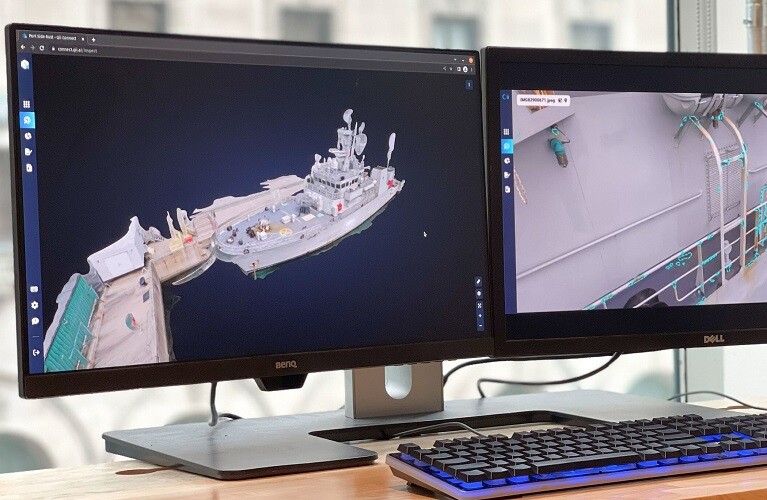The Royal Canadian Navy recently awarded a contract to Qii.AI to use its software to conduct ship inspections. Working with Canada's Naval Engineering Test Establishment (NETE), Qii will use its AI-assisted digital inspection software to detect corrosion on naval ships based on data gathered by small inspection drones from Skydio.
In a statement, Qii highlighted how its systems can increase accuracy and decrease the time spent on these inspections. “(S)hip inspections from drone imagery can be completed in a fraction of the time taken for traditional methods. Artificial Intelligence then accelerates the process even more by automating the detection and measurement of issues in need of remediation, like corrosion or other problems,” Qii asserted.
The deal highlights the growing use of using drone-based systems for ship inspections. The recent "Global Ship Hull Inspection Services Market Report and Forecast 2022-2027" estimated the worldwide ship hull inspection services market to be more than $12 million in 2021. Becasue of “growing demand for new ships and operations,” the report projected that the market would rise to more than $14 million by 2027.
But ship inspections are not the only operations that are demonstrating the value of drones at sea. In recent years, more and more uncrewed systems have been deployed to aid in monitoring shipping ports, checking the condition of ocean-based assets such as oil rigs, and aiding public safety operations on cruise ships.
Last October, for example, the Port of Rotterdam announced that it would test the use of drones to perform a range of tasks. An article in The Maritime Executive explained that the port—one of the busiest in the world—aimed “to find out if the drones are suitable for supporting inspectors and shipping masters in their work. The trials are focused on sea-going and inland shipping inspections by the Harbor Master’s Division on bunkering, water pollution, ship-to-ship transfer, zoning for hazardous substances, shore-to-ship transfer, air pollution (smoke or soot), and repairs on board vessels.”
Another recent development pointing to the value of using drones for sea-based work is the recent agreement between Draganfly and Lufthansa. As reported in Commercial UAV News, Lufthansa will use Draganfly drones to bring added speed, safety, and accuracy to marine search and rescue missions, and it will use the company’s AI Vital Intelligence (VI) platform monitor the health and well-being of the ship's population.
According to Draganfly CEO Cameron Chell, projects like these clearly show the many benefits of using drones for maritime missions. “Drones can revolutionize transportation, whether by improving delivery times, gathering data for inspection purposes, reducing transportation costs, or improving safety,” he said. “As drones become more prevalent in the maritime industry, we anticipate that they will become a staple.”















Comments